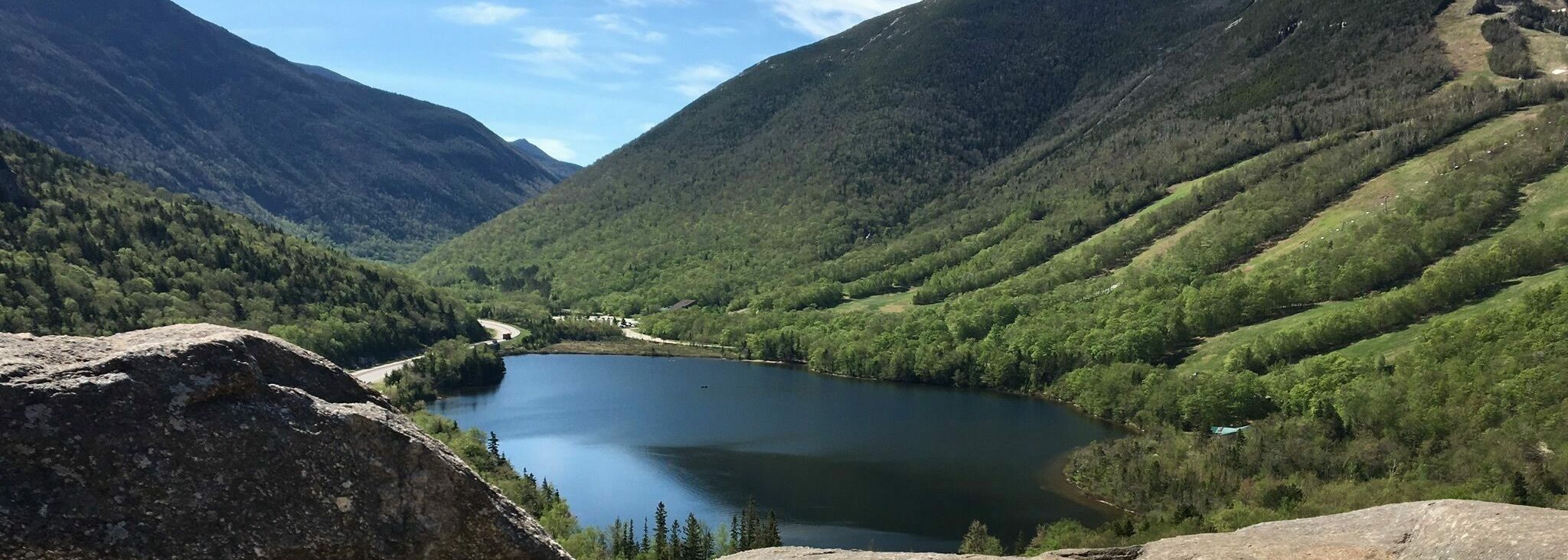Spring is the perfect time to start your plan!
As winter slowly loosens its grip and hints of spring emerge, longer days and melting snow make this the perfect time to start planning your gardens and greenery on your property. And, while the allure of colorful blooms and luscious greens may be motivation enough, there’s another compelling reason to roll up your sleeves and get your hands dirty: the health of our lakes.

The Importance of Native Vegetation for Healthy Lakes
Native plants matter whether you live along a lake or miles from it. Here are the main ways in which native vegetation contributes to the health of our lakes:
- Soil protection: Plants and their roots stabilize and cover soil, keeping it in place to prevent it from washing off into our lakes. Soil and sediment can fill in our lakes and carry pollutants such as phosphorus, which feeds unwanted plant, algal, and cyanobacteria growth.
- Pollutant filtration: Native vegetation acts as a natural filter by trapping and breaking down pollutants such as heavy metals and pesticides from runoff water before reaching the lake.
- Water infiltration: Vegetation allows water to infiltrate (soak into the ground) more effectively, reducing surface runoff and helping to recharge groundwater aquifers.
- Habitat creation: The vegetation on your property supports native ecosystems by providing food and shelter for wildlife, including birds, insects, and amphibians. These species play essential roles in the ecosystem, from pollinating plants to controlling pests.
Getting Started
The options in the world of gardening are endless! Make your property more lake-friendly using native vegetation by starting with these steps:
- Discover what hardiness zone you are in at planthardiness.ars.usda.gov. It varies across New Hampshire! Sellers mark plants and seeds with the zones they grow best in.
- Test your soil first to see what’s in there. Testing your soil will help inform what plants you choose and which additives to buy, if any.
- Know your land. Observe the amount of sunlight your property gets and areas where water tends to pool. The sunlight and water needs differ from plant to plant.
- Choose plants from trusted sources.
- Your local plant nursery or garden shop should have a decent selection of native plants.
- The New Hampshire State Forest Nursery is also a good option but get in early because supplies sell fast.
- Contact your local county conservation district to see if they have a seedling sale.
5. Wait until it’s consistently over 50°F to do yard work. Insects, pollinators, and other organisms might still be overwintering in your yard.
Some properties feature an all-natural, “wild” look. But you don’t have to let your plants grow uncontrolled to protect lake health. The University of New Hampshire’s “Landscaping at the Water’s Edge” is an excellent guide for lake-friendly landscaping.


Invasive vs. Native
Choose native plant species when planning your property’s vegetation. Native plants are naturally suited to the local climate and soil. They are well-adapted to thrive in their environment.
In contrast, invasive species are not naturally found in an area and can cause damage. They outcompete native vegetation, alter the landscape, and attract unwanted animals and insects. Non-native species promote undesirable change, even if it’s not immediately apparent.
Invasive species can spread rapidly and displace native species. Human activities and wildlife can contribute to their spread. New Hampshire has taken the following actions to control invasive species:
- The Invasive Species Act controls prohibited invasive species
- The watch list details species that could impact our native species and local area
Many homes already have invasive species planted on the property. Check out these resources for invasive management.
Look at some of our favorite native plant recommendations in these graphics:
Interested in further exploring your vegetation options? Visit these resources:
Shoreline Buffers
If you live on a lake or waterbody, some of the most crucial vegetation grows along the water. This is known as the shoreline buffer. The shoreline buffer is a diverse mix of woody and non-woody vegetation. Buffers prevent shoreline erosion, filter runoff water, and provide habitat. They also create shady spots for cold-water fish and privacy for homeowners.
The Shoreland Water Quality Protection Act regulates the management of this area. It covers activities such as vegetation removal, pruning, and permitting. Check out the guidelines here.
Keep it LakeSmart!
Do you want personalized recommendations on what to plant and where to plant it? Make your plantings part of a larger lake-friendly living plan. The LakeSmart Program can help!




 by Martech Consulting
by Martech Consulting